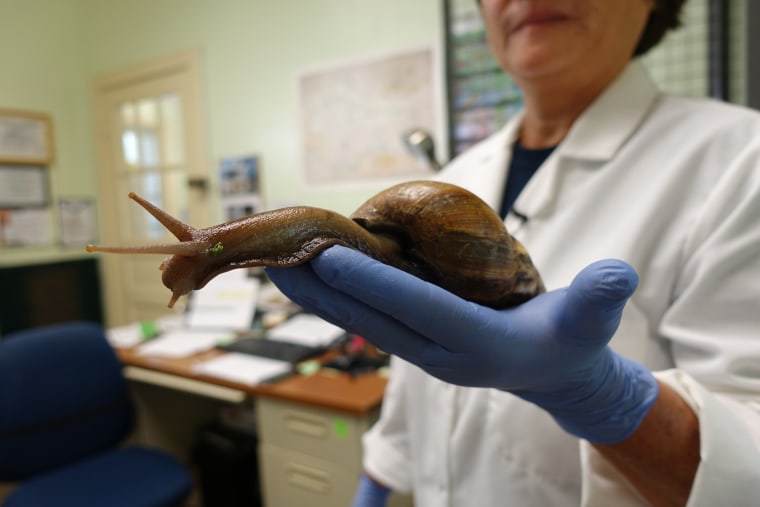Parts of Broward County, Florida, are under quarantine after a giant African land snail — described as "one of the most damaging snails in the world" — was detected this month, agriculture authorities said.
Officials “confirmed the detection” of the snail in the Miramar area of Broward County on June 2 following a report to the Florida Department of Agriculture and Consumer Services.
A quarantine area was established Tuesday from Pembroke Road and South University Drive south to NW 215th Street and east to SW 62nd Avenue, the agency said. A map shared by the department shows two specific treatment areas.
Under the quarantine, it’s illegal to move the snail or plants, compost, soil or building materials through or from a quarantine area without a compliance agreement.
The giant African land snail, which is illegal to import or have in the U.S. without a permit, consumes at least 500 different types of plants, according to the agriculture department. They can be devastating to Florida agriculture, as they “cause extensive damage to tropical and subtropical environments,” the agency said.
The creatures also pose “serious health risk to humans” by carrying parasite rat lungwort, or meningitis in humans, the agriculture department said.
Now a treatment process is underway to “eradicate” the pest using metaldehyde-based molluscicide, or snail bait.
Metaldehyde, a pesticide used to control snails and slugs, works by disrupting mucus production and in turn makes them susceptible to dehydration, the agriculture department said in a release.
“Snails and slugs that have eaten metaldehyde often seek hiding places, become inactive and begin to die within days,” it said.
The treatment areas include properties within 200 yards of a snail detection. Properties in those areas will need 26 treatments and 19 months of "negative" surveys for the presence of the snails. The surveys will include one performed by a detector dog.
"These procedures are required to safeguard Florida’s agriculture industries and natural resources along with ensuring there are no international trade implications enforced due to the establishment of this detrimental pest," the agriculture department said.
The giant African land snail has already been eradicated from Florida twice. First detected in 1969, it was eradicated in 1975. The snails were eradicated again in 2021 after a 2011 detection in Miami-Dade County, according to the agriculture department.
